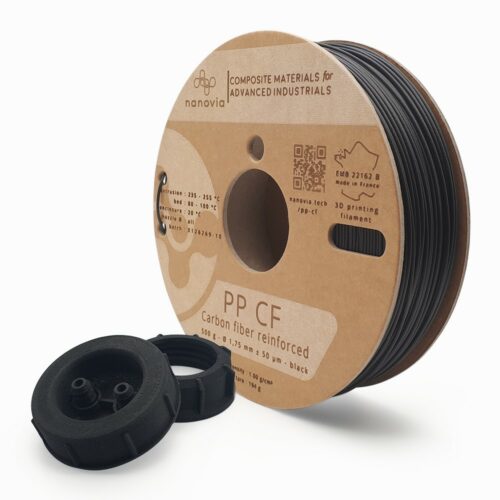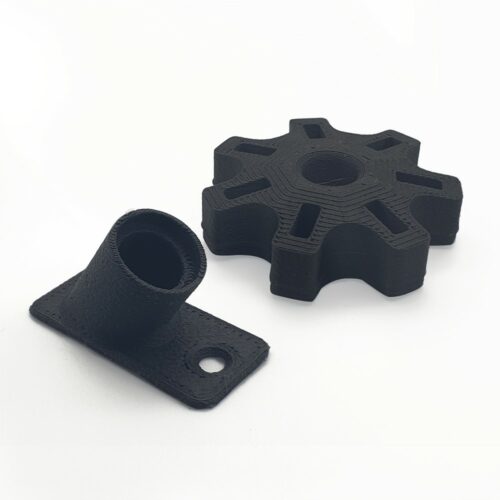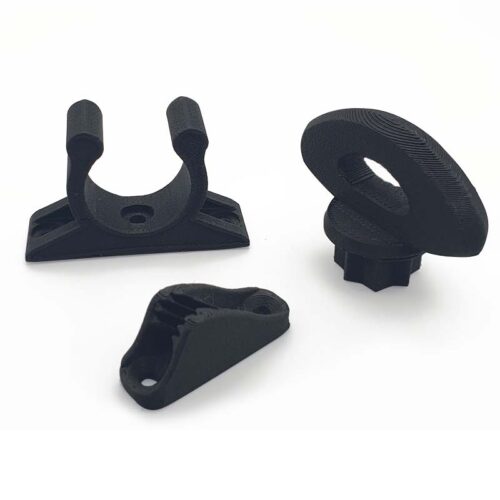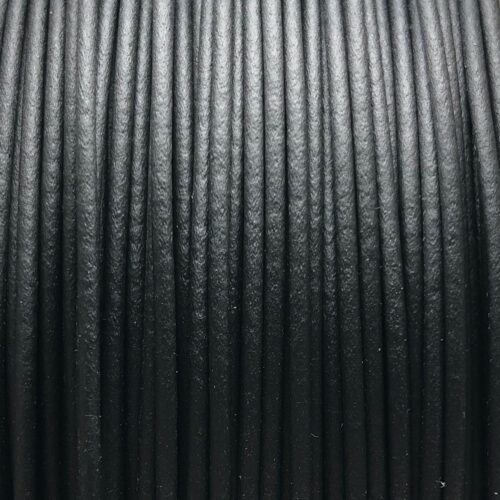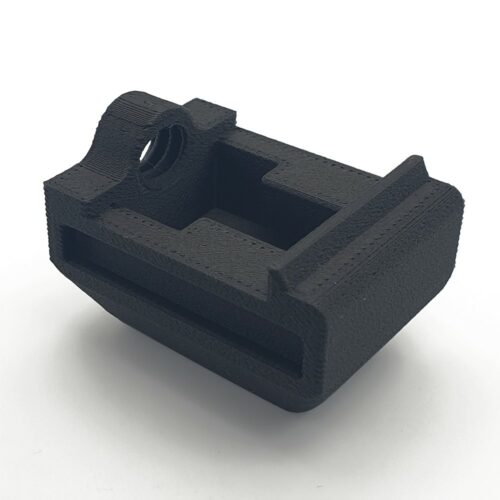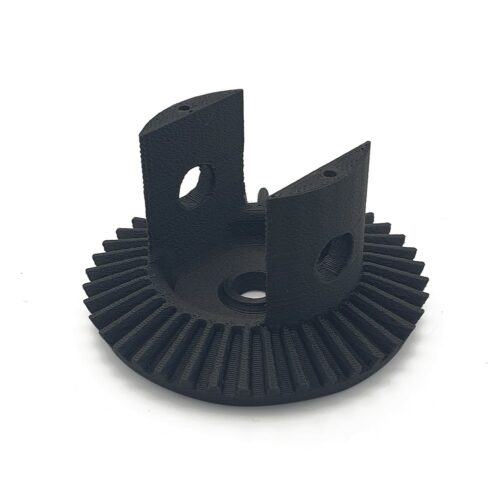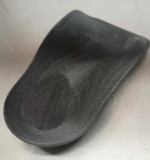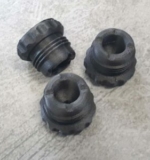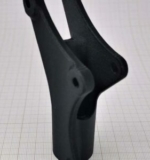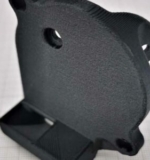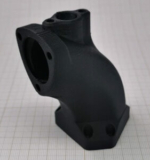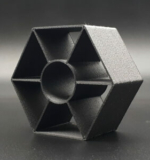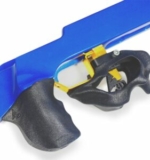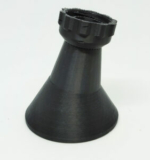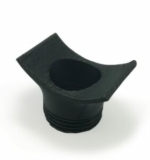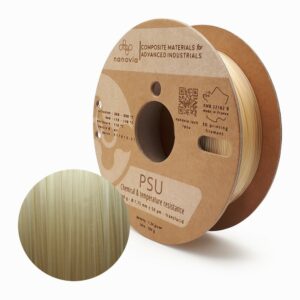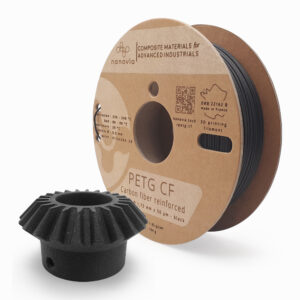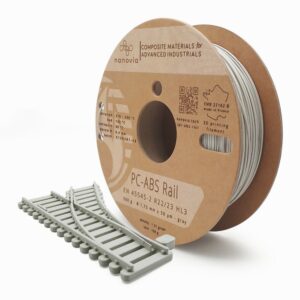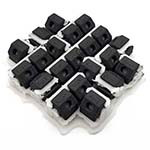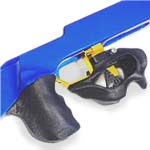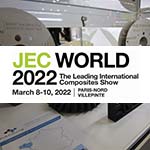Description
Properties3D Printing
Mechanical propertiesPhysical
Tensile
Test performed at 1mm/min on 3D printed test specimins at 0°, along with the tension stress.
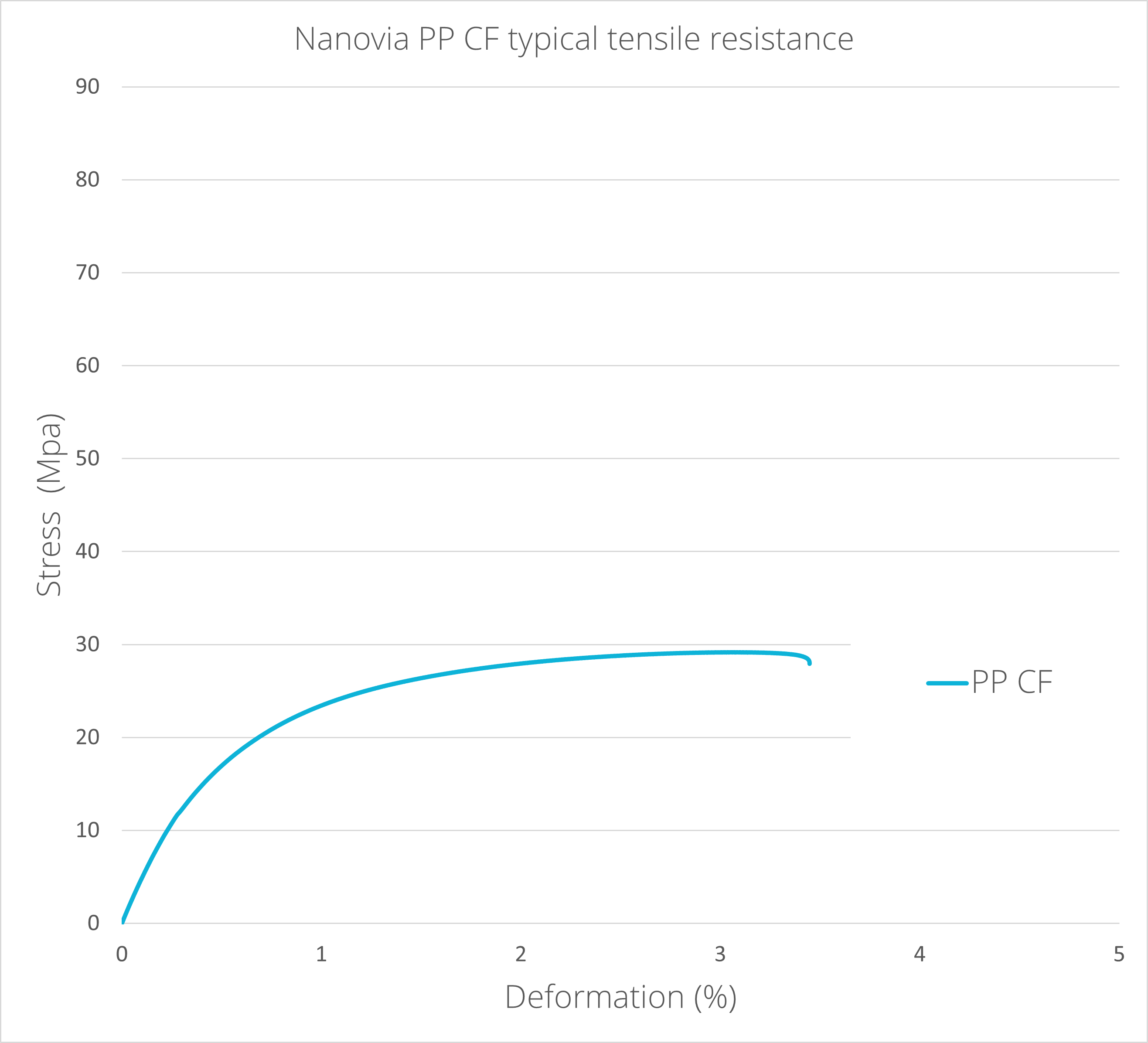
Impact
Thermal properties
DocumentationDownload the technical chart Download the security chartlast updated : 21/02/2024 Polypropylene is a semi-rigid material, with high wear and shock resistance, notably used for hinges and components that endure regular flexing. The added carbon fibers makes Nanovia PP more rigid and UV resistant. Humidity proof, it’s perfectly suited for both outdoor and high stress industral applications. Much like polyamide (nylon), polypropylene gradually becomes more flexible with higher temperatures. The carbon fiber composition of Nanovia PP CF limit this phenomenon allowing it to be used for parts that require dimensional control in hot and humid environments. Advantages
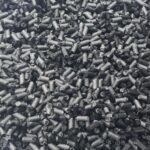
Nanovia PP CF is also available in pellet form for plastic extrusion and FGF 3D printing. User photosApplication recommendations
Storage
Printing
Health and safetyPrinting
Post treatment
CertificationsPackagingVacuum packed spools, with desicant, packed in individual boxes with engraved serial number. Other formats available on demand.
|
